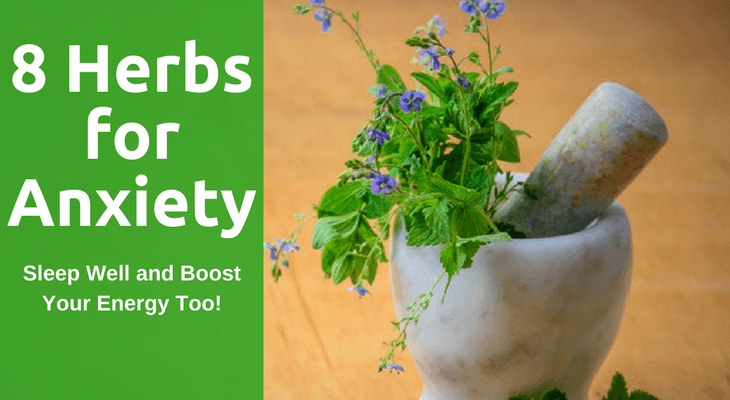Do you feel tense, anxious, or worried on a regular basis? Perhaps your job or family responsibilities are starting to feel overwhelming? You’re not alone. According to stats from the American Institute of Stress, 77% of people are so stressed that it impacts their physical health, while 33% of people suffer from extreme stress. Mindfulness meditation can help!
Some of the most common causes of stress include money worries, extensive work hours, a troubled relationship, health issues, job stability, the state of the economy, and even large-scale issues such as climate change. Yep, there’s a lot to worry about in today’s fast-changing world, and none of us is immune from anxiety.
So, how can you keep calm and stop your mind from spiraling out of control? Obviously, you’re not going to sort out the economy any time soon. While it may be difficult (or, indeed, impossible) to address the root causes of your stress, there is a valuable tool you can use to calm your racing mind and improve your overall mental health: mindfulness.
Looking for a shareable, easy to read guide on mindfulness meditation? Check out our new infographic!
So, what is mindfulness meditation, exactly?
You’ve probably heard about mindfulness a million times before. While rooted in ancient Buddhist traditions, mindfulness has become a trendy method for fighting stress and thriving in today’s fast-paced world. It can take a variety of forms and be incorporated into a range of everyday practices, such as mindful eating or mindful dressing.
Put simply, mindfulness means keeping a sustained focus on your bodily sensations, thoughts, emotions, and the surrounding environment. The idea behind mindfulness is not to cast judgment over your feelings or fleeting thoughts. Rather, it’s about tuning into your sensations and experiences in the present moment and acknowledging how you feel.
We spend much of our lives speculating about the future or agonizing over the past. Mindfulness is about rejecting this impulse for a short while to put your worries into perspective and help you learn to live in the moment. Typically, mindfulness takes the form of meditation. However, it is a flexible concept that you can incorporate into your daily life in several ways (as we will explore shortly).
Where did the concept of mindfulness come from?
People have been practicing mindfulness for millennia. Broadly speaking, it was popularized in the East by spiritual and religious institutions – particularly those associated with Hinduism and Buddhism. In Buddhism, mindfulness is thought to be the first step toward enlightenment.
Mindfulness trickled over toward the West in much more recent times. The practice was adopted in secular contexts and became an object of study for psychologists and neuroscientists. As its beneficial effects became clear, mindfulness became a popular stress-reduction technique and wellness trend.
How will mindfulness meditation improve my life?
Mindfulness meditation is associated with many benefits, including:
1. Improved ability to regulate emotions
Do you struggle to exert control over your emotions? Perhaps you’re prone to embarrassing outbursts of anger or have become known as “the crier” of your social circle? Mindfulness could help you maintain control in emotionally challenging situations by honing your self-reflective abilities.
Say, for example, someone challenges you in a workplace situation. You think they’re being unfair, and feelings of anger start to rise. Mindfulness will teach you to stand back for a moment, accept your emotions, and compose yourself, allowing you to create a response that will benefit everyone and defuse the situation.
2. Lower stress levels
According to a review of over 200 scientific studies, mindfulness is especially effective in tackling stress, depression, and anxiety in healthy adults. If you’re struggling to cope with a heavy workload or family issues, practicing mindfulness could soothe anxious feelings and improve your quality of life.
3. Reduce depressive symptoms
According to research published in The Lancet, mindfulness-based cognitive therapy (MBCT) could help relieve symptoms of depression. If you’re struggling with depressive symptoms, embarking on a structured mindfulness course could help you to regain control of your life and mental health.
4. Improved physical health
Mental health and physical health are tightly intertwined. Chronic stress, for example, has the potential to cause some of the following symptoms:
- Frequent viral infections such as cold and flu
- Muscle tension
- Aches and pains
- Gastric issues, such as diarrhea and nausea
- Headaches
- Fatigue
- Dry mouth
- Low libido
- Insomnia
- Chest pains and increased heart rate
- Cognitive impairment
- Decreased appetite
In the long term, these symptoms can lead to chronic diseases and life-threatening illnesses, such as heart disease, stroke, gastritis, sexual dysfunction, high blood pressure, and heart attacks.
If this sounds scary, rest assured there are plenty of steps you can take to lower your stress levels. On top of making lifestyle changes, mindfulness could help you cope more easily with stressful situations and reduce the impact on your body.
5. Stronger interpersonal relationships
Recent evidence suggests that people who practice mindfulness are more accepting of others’ imperfections and character flaws. People who are more tolerant of perceived shortcomings tend to be more satisfied with their relationships and, therefore, better able to maintain strong connections with people.
6. Improved memory
Do you struggle to retain vital information? Mindfulness could boost your memory and ensure you never forget an important meeting again. While you may think of forgetfulness as a natural part of your personality, it’s actually the product of something called proactive interference.
Proactive interference happens when old memories impact your ability to make newer memories. According to a recent study, learning mindfulness could significantly reduce occurrences of proactive interference and enhance your memory.
7. Better cognitive abilities
If you struggle to stay focused on simple tasks, mindfulness could help you think more clearly. In teaching you to focus intensely on your bodily sensations, mindfulness will help you ignore distractions and suppress intrusive thoughts. If you’re a chronic procrastinator, mindfulness could boost your productivity and help you to derive joy from your work.
8. Improved sleep
There’s nothing more frustrating than lying awake in bed and agonizing over minor worries. Mindfulness will teach you to brush away intrusive thoughts and calm your mind when bedtime comes around. With more sleep, you’ll start to notice an array of mental and physical benefits, including sharper focus and a stronger immune system. In addition to benefits from mindfulness meditation, there are a number of natural remedies that help with sleep.
How can I get started with mindfulness meditation?
Before you embark on your journey toward mindfulness, here are a few facts to remember:
- Mindfulness is not about changing who you are – it’s about recognizing your own humanity and accepting yourself.
- Everyone has the potential to be mindful – while it may seem difficult at first, it’ll come naturally with practice.
- Mindfulness is grounded in scientific evidence and has been shown to contain a wealth of benefits.
- Mindfulness isn’t a form of ‘work’ or ‘self-improvement’ – it’s an innate human quality that can be nurtured.
- Practicing mindfulness doesn’t cost a penny and could help you to cope with the challenges of a changing world.
So, with these facts in mind, you’re probably keen to get started. Before you begin experimenting with mindfulness techniques, you’ll need to get to grips with the basics of meditation.
Guide to getting started with mindfulness meditation
Here’s the beginners guide to getting started with mindfulness meditation:
- Sit down in a comfortable position. You may wish to purchase a meditation cushion, but anywhere with a stable seat will do (i.e., a park bench, a wooden chair, or a soft carpet).
- Think about your legs and how to position them. Many people choose to cross their legs in a yogic position. If you’re sitting on a chair, it’s beneficial if your feet are touching the floor (this will reduce the temptation to swing your legs while meditating).
- Straighten your upper body. You should try to remain relaxed and avoid locking your spine here – just ensure your head and shoulders are resting comfortably.
- Allow your hands to rest gently on top of your legs, with your upper arms resting by your sides. Try not to hunch forward or lean too far backwards, as this will cause your body to stiffen.
- Allow your chin and eyelids to lower gently. You can close your eyes if you wish, but this isn’t strictly necessary. If your eyes are slightly open, try to gaze forward and avoid focusing on a particular object.
- Sit in this position for a minute or so, allowing your muscles to relax. Focus on your breathing and the sensations in your body. If your mind starts to move toward stressful topics, don’t punish yourself (trust us – it will happen on your first go!) Instead, acknowledge your feelings and swiftly move back to thinking about your bodily sensations in the present moment.
- Get up and go about your day. You can set a timer if you like – or simply get up when you feel ready. Meditating is often very difficult for beginners, who struggle to empty their minds. If this applies to you, don’t worry. Practice makes perfect!
As you can see, there’s no special trick to practicing mindfulness. It’s a beautifully simple ritual that will help you connect to your surroundings and your body. While you’re unlikely to ace it at first, practicing for just two minutes once a day could work wonders for your mental health. As you get better at holding focus on your breathing, you can extend your meditation sessions to as long as five, ten, or even twenty minutes!
A note of caution about self-reflection
Mindfulness is generally a very safe practice that almost anyone can learn. However, self-reflective practices have the potential to dredge up challenging emotions, especially if you’ve been diagnosed with post-traumatic stress disorder (PTSD). According to a recent study, around 6% of participants who practiced mindfulness experienced adverse effects such as anxiety, emotional numbness, and dissociation. At the same time, however, these participants noticed big improvements in their depressive symptoms.
So, we’re not suggesting that you shouldn’t try mindfulness if you have a history of trauma. Rather, you should be aware that meditation could trigger certain emotions and may not deliver immediate relief from stress. As such, you may wish to consider working with a mental health professional to help guide you through your mindfulness journey and develop skills for coping with difficult feelings.
Seven types of mindfulness meditation to try today
Okay, so now you know the basics of meditation and are starting to get to grips with mindfulness. What next? Well, there are many subcategories of meditation that you may wish to discover. Some approaches may suit you better than others, so it’s worth exploring your options and experimenting with different practices. Here are some of the most common ways to meditate:
1. Body scan meditation
Also known as progressive relaxation, body scan meditation involves releasing tension gradually across your body. To start, lie down somewhere comfortable and private. Get into a comfortable breathing rhythm and focus on one end of your body (usually your feet).
Try to release any tension you notice in this part of the body, tensing beforehand if necessary. Then, start working up the body, through your lower legs, thighs, hips, torso, etc., releasing tension as you go. This form of meditation may be especially calming for those with chronic pain or insomnia.
2. Walking meditation
Find a clear space measuring between 10 and 20 feet in length. Breathing deeply, start to walk slowly up and down the space. Focus on the experience of moving your body and think about how your body keeps its balance. As with sitting meditation, try to ignore any intrusive thoughts and focus on the sensations you’re feeling in the moment.
3. Visualization
Visualization encourages you to conjure a mental image of a person or object. Once you’ve come up with something, focus intensely on the mental image and observe any obstacles or difficulties you face.
4. Reflection meditation
This form of meditation involves asking yourself a broad question such as “What brings you happiness?” or “What are you grateful for?”. While you meditate, allow your mind to throw up as many answers as possible. This technique teaches you to focus on your feelings rather than give precedence to your rational mind.
5. Loving-kindness meditation
This technique involves focusing on an image of someone in your life and directing positive energy toward them. First, you must direct positive thoughts toward yourself, which can then be reflected toward the outer world and to the people in your life. Don’t just focus on people you genuinely love – thinking kind thoughts about challenging coworkers or troublesome family members will help you cultivate a more open and forgiving outlook on the world.
6. Note-taking meditation
This form of meditation is similar to the basic formula described earlier. Rather than ignoring intrusive thoughts, however, you should note what patterns seem to emerge. Taking note of your thoughts and feelings in this way will help you to understand your cognitive habits and conditioning. When you notice potentially harmful patterns during meditation, you’ll start to notice them in your everyday life. From there, you can take steps to tackle unhelpful thoughts.
7. Transcendental meditation
A favorite technique of many celebrities, transcendental meditation involves sitting down and repeating a mantra in your head as you meditate. The mantra tends to be a sound without meaning that will help to settle your mind through rhythm. Most people who practice transcendental meditation engage in very long sessions (upwards of 20 minutes).
How can I incorporate mindfulness meditation into my everyday life?
Mindfulness isn’t just about taking a seat and meditating – it’s possible to incorporate mindful practices into your everyday activities. Here’s how:
1. Get out into nature
The natural world is very soothing. Even a short walk in your local park could help to calm your mind and blow away the worries of the day. You may even wish to consider meditating in the open air. If you feel self-conscious about meditating in a public space, why not sit down in your garden or find a secluded spot on the outskirts of town? Listening to the rustling trees and feeling the wind blow through your hair will help you develop a stronger connection to your surroundings and learn to live in the moment.
2. Try to be a more active listener
How often have you been chatting to a friend and suddenly realized you’re not processing everything they’re saying? Don’t fret – it happens to the best of us and doesn’t mean you’re a bad friend. Fortunately, it is possible to improve your conversational abilities through proactive listening. Next time you converse with someone, remind yourself to give them your full attention. As they’re speaking, think about what their words might indicate about their emotions and adapt your responses accordingly.
Proactive listening could help you become a more empathetic person toward others and yourself. After a few weeks of proactive listening, you may also notice that the quality of your conversations with others starts to improve.
3. Practice gratitude
Practicing gratitude involves thinking about the positive things in your life. Rather than reflect on the joys of the past, you should consider what is great about the present. These positive things could include absolutely anything that comes to mind, from your amazing friends to the delightful pot plant on your windowsill.
If you’re looking to take this practice a step further, why not keep a gratitude journal? Retaining a written account of positive things may help you to cope with difficult days. Simply open the book and flip through your entries for a quick boost of optimism.
4. Focus on your body throughout the day
Is your mind starting to wonder? Are you beginning to boil over with stress? Checking in with your body and focusing on small sensations will help keep you grounded within the moment. You can choose to focus on any bodily sensation that springs to mind, from the beats of your heart to the slightly sore muscles from yesterday’s gym session.
As well as calming you down and improving your focus, this practice could help you take better care of your body. If you start to notice discomfort or pain in certain places, it’s a good idea to address the problem early.
5. Pay closer attention to your senses
Learning to live in the moment means paying close attention to your senses and appreciating life’s small gifts. If you notice a pleasant smell or hear beautiful music, take a few seconds to stop what you’re doing and luxuriate in the sensations. Even faint sounds or scents could evoke vivid memories that help you to feel connected to your body and your history.
6. Keep a daily journal
Journaling can help you focus on your thoughts and understand your emotions in a given moment. Don’t worry about writing beautiful prose or even full sentences – a simple mind map of your thoughts and feelings could help to reduce stress.
7. Make a list of things you’ve never noticed before
Sit down in a familiar setting such as your kitchen or bathroom and make a list of all the things you’ve never noticed before. You might spot interesting patterns in your wallpaper or unusual details about your taps. Get creative and try to stick at it for at least ten minutes. This exercise will help you develop a stronger emotional connection to your home or dwelling.
8. Exercise
Yep, simply moving your body and getting your heart racing can bust stress and help you become more mindful of your surroundings. Good examples include jogging, swimming, and walking – these activities can be very meditative and tend to produce strong physical sensations on which to focus.
Embark on your mindfulness meditation journey today!
So, there you have it – a complete guide to mindfulness and its potential to transform your life for the better. While it may take a little while to get right, mindfulness could help you to live a more fulfilling life in the long term. It could even spark a profound change in your mindset, encouraging you to reconsider certain life choices or embark on a new career path – the opportunities are endless!










1 comment
Worrying thc chocolate bar has been truly the journey. As someone impassioned on idiot remedies, delving into the epoch of hemp has been eye-opening. From CBD grease to hemp seeds and protein bray, I’ve explored a disparity of goods. Undeterred by the gallimaufry adjacent hemp, researching and consulting experts organize helped nautical con this burgeoning field. Entire, my meet with with hemp has been confident, present holistic well-being solutions and sustainable choices.